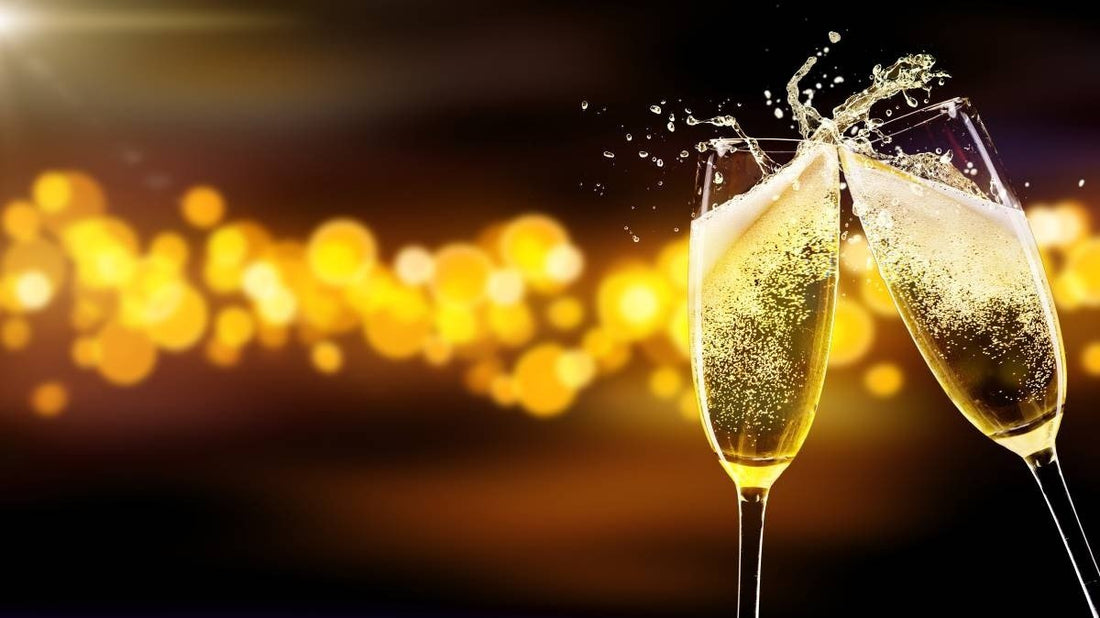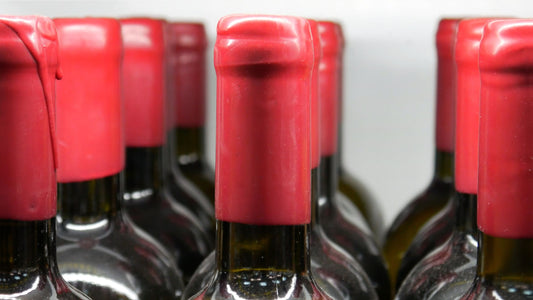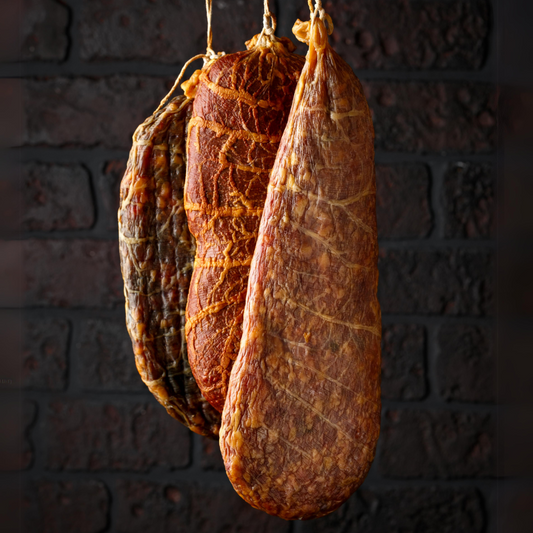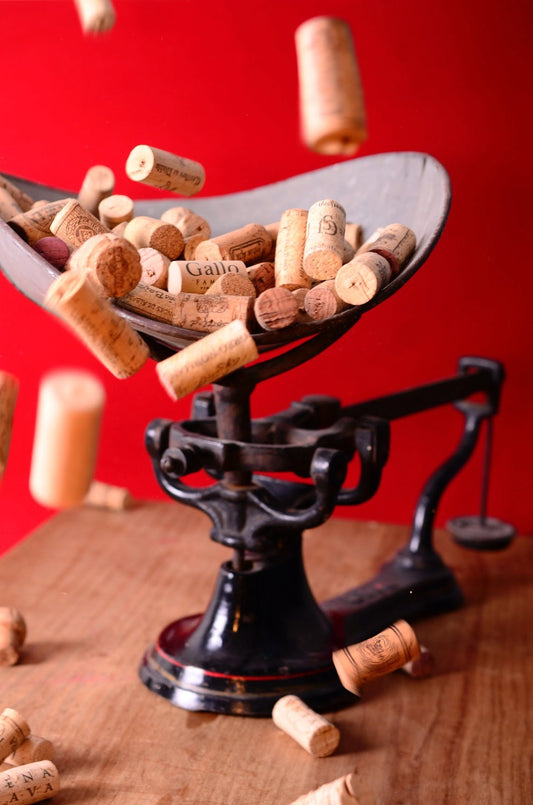How to make Sparkling Wine

DAY 1
Step 1
Sterilise all equipment to be used for day 1.
For sparkling red wine, follow steps 1 to 7 from the “How to make Rose” blog. After that step, you need to rack the wine with no sediments. And then switch back to this recipe to make it sparkling.
Step 2
- Crush the grapes and load it into the press
- Squeeze the pulp
- Over-extracting the skins can make the pulp bitter. The pressed pulp should be about 1/4th the size of the press when done extracting
- Add packet A from the kit (as per the instructions)
- Add packet B immediately after adding packet A
Step 3
Grab a sample of this juice and test its baume and pH. Check this table to understand if any additives are necessary.
|
Baume Level |
Action required | Ph Level |
Action Required |
|
<12 Baume |
If it is at 11 Baume then add 1 L of Grape concentrate for every 45 L of must. (Equivalent to 5 boxes of grapes).If at 10 Baume then double the amount per 45 L of must. | < 3.2 | Add Potassium Bicarbonate. Check the store for details. |
| 12 to 13 Baume | No action needed | Ph 2.9 - 3.3 | No action required |
| > 13 Baume | It is not recommended to use this wine to make sparkling at this sugar level. | > 3.3 |
If 0.2 over, then add 1 gram per litre of must. If 0.4 over, then add 2 grams per litre. If more than 0.4 then please have your wine assessed in store. |
For best results, store in a wine cooler. If leftover night, grape solids will settle. The clear juice can then be siphoned off and stored in a demijohn or stainless-steel V/C tank.
DAY 2Step 4
- Ensure that only 2/3rd of the demijohn is full. This will help with the fermentation
- The remaining 1/3rd must be placed in the refrigerator
- If a V/C tank is being used, then leave 10% head space
- Now add packets C and D as per the instructions
- The wine will start bubbling in the next 24 hours, else bring the wine for an assessment
- On a daily basis add a little juice till the container is full. The frothing will start to slow down
- Add judiciously and ensure the container does not overflow
DAY 3
Step 5
Measure the fermented wine’s temperature regularly. If it exceeds 30 degrees, then cool it down using artificial means like – wet towels. Ice over the container or switching the room’s cooling. Such wine best ferments in a room 18 to 25 degrees.
Check the wine’s pH after 5 days and adjust based on the above table.After day 3 check the wine’s baume. Once is reaches 0, proceed to the next step.
Step 6
Within a week the fermentation should slow down. At this stage check the below table –
| With some wines they require tannin to balance fruit, oak and acid |
Add tannin at the rate stated on the packet. Ask our staff for recommendations regarding different types of tannins and your preferred wine. |
- Every week test the baume and pH of your wine.
- We are looking for a pH of 3.3 to 3.6 and a baume of -1.
- If pH is above this then adjust as per the table above and if baume has not reached -1 after the first two weeks, then stir lees at the bottom of the container for 30 seconds and put the airlock back on.
- Do this twice a week for two weeks.
-If the wine has not gotten to -1 by the end of this stage, then bring in the wine for an assessment.
Step 7:Fermentation is considered done when we have the following conditions:
- Wine does not taste sweet
- -1 baume has been achieved (check with the hydrometer)
- Airlock stops bubbling
Step 8:
Once the fermentation is complete the wine needs to be racked from the lees. Smell and taste the wine at this stage. You should be getting a fruit-driven oak through to buttery or biscuity aroma and taste. If you get any vegetable, vinegar, sulfurous or other smells then bring your wine into the store for an assessment.
Once the wine is clear of any sediments, it can be put into Champagne bottles. The pressure of a sparkling wine can only be handled by a champagne bottle, so this is a mandatory step.
Step 9:
You must ensure a few things before bottling:
- The wine’s specific gravity (SG) must be 1000. If not, you will have to adjust the amount of sugar that needs to be added for secondary fermentation
- Bottle explosion can occur if there is a lot of residual sugar
- Dose wine with these electives – 16 g/ L of dextrose and 0.2 g of yeast per litre
- Make the entire mixture and then start bottling
You could at this stage use a bench capper and close the bottle with a tirage cap. Once bottled, the bottle can be stored anywhere between 6 months to 2 years (on the side only).
Step 10:
Get your protective gear ready. Once the wine has reached this certain level of maturity, the sediments need to be riddled. And moved to the neck of the bottle. Every couple of days over a span of four weeks, nudge and tilt the bottle gently. Continue doing this till the neck is upside down and the yeast is in the neck.
- You could use a strong crate with divisions or a riddling rack to complete this process
- Disgorge only after the bottles are completely upside down
Step 11:
- Keep some wine aside for topping up. All disgorging must be done only after the bottles are chilled or in a cool room. This ensures that the least amount of wine is lost in the process.
- The disgorging process can be messy. Ask a loved one to help and keep the area and tools ready.
- Disgorge and recork the sparkling wine bottles as quickly as possible. Time plays a critical factor during carbonation.
This part can be a little dangerous if not done right. Please use protective gear/clothing and especially cover your face and hands. The bottles need to be stored right and the necks need to be frozen before moving to the next step.
Step 12:
- Place the bottle against your thigh
- Use a bottle opener. Aim away from your body and quickly open the bottle.
- This will shoot the ice plug with the yeast
- Quickly cover the neck and return the bottle into an upright position
- Plastic champagne stoppers are easy to use - Try this process for a couple more bottles. Use the wine from the first bottle to top them. Immediately apply a plastic stopper and wire the bottles and place them back – for maturing. - Ideally store in a cool cellar. Sparkling wine can be stored for up to 12 months.




